Why Are Brazil's Manufacturers Replacing Manual Handling with Pallet Inverters?
Are your warehouse workers still manually transferring goods from one pallet to another? This process is slow, physically demanding, and often leads to damaged products and workplace injuries. I have seen many companies in Brazil struggle with these same issues. They face rising labor costs and pressure to increase efficiency. This old way of doing things just isn't sustainable in today's competitive market. The constant risk of bottlenecks and accidents creates a major headache for any factory owner focused on growth and stability.
Brazilian manufacturers are rapidly adopting pallet inverters because these machines offer a direct solution to the high costs, inefficiencies, and safety hazards of manual pallet exchange. A pallet inverter can securely grip a full pallet load, rotate it 180 degrees, and allow for the quick and easy replacement of the pallet underneath. This single piece of equipment dramatically reduces labor requirements, minimizes product damage, and significantly improves operational speed and worker safety.
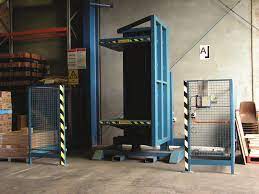
This shift is not just a trend; it's a strategic move. I've been in the packaging machinery business for a long time, starting on the factory floor and eventually building my own company, SHJLPACK. I’ve helped countless clients transform their operations. I understand the pressures you face, especially in heavy industries like steel manufacturing. You need solutions that provide a clear return on investment. Let's explore exactly how pallet inverters are delivering that return and why so many forward-thinking leaders in Brazil are making this investment.
How Do Pallet Inverters Directly Reduce Operational Costs?
Your budget is under constant pressure from fluctuating energy prices and market demands. You look at every line item, searching for savings. Manual handling seems cheap on the surface, but its hidden costs are eating into your profits through inefficiency, product damage, and potential compensation claims. You need a way to cut these expenses without compromising output, a solution that pays for itself quickly.
Pallet inverters reduce direct operational costs by targeting three major expense areas: labor, product damage, and pallet management. They automate a labor-intensive task, allowing you to reassign workers to more value-added roles. They handle products gently, cutting losses from drops and impacts. And they enable the use of cheaper shipping pallets, saving money on every single shipment that leaves your facility.
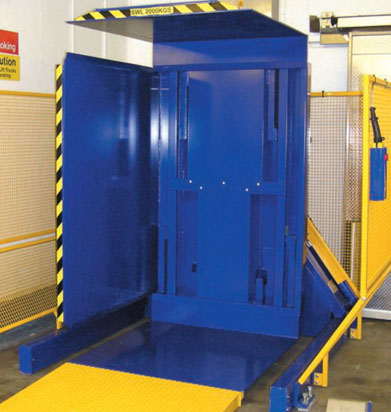
A Deeper Look at Cost Reduction
When I talk to factory owners, like Javier, their primary concern is always the bottom line. They need to see a clear path from investment to profit. The case for a pallet inverter is built on tangible, measurable savings that go far beyond just the initial machine cost. Let's break down the numbers.
Labor Savings
Manual pallet swapping is a slow, multi-person job. It often requires two to four workers to carefully de-stack and re-stack a pallet. This process can take anywhere from 15 to 30 minutes per pallet. A pallet inverter, operated by a single forklift driver, can complete the same task in under 60 seconds. Imagine a facility that needs to swap 50 pallets per day. Manually, this could consume up to 25 man-hours daily. With a pallet inverter, it would take less than one hour of a single operator's time. The labor savings alone can be enormous, often providing a return on investment in less than a year.
Reduced Product Damage
Every time a product is handled manually, there is a risk of it being dropped, dented, or crushed. This is especially true for heavy or awkwardly shaped goods, like steel coils or stacked boxes. I once worked with a beverage company in Brazil that was losing nearly 3% of its bottled product during the transfer from in-house plastic pallets to cheaper wooden shipping pallets. The cost of this lost product, plus the cleanup and disposal, was significant. After installing a pallet inverter, their product damage rate from this specific process dropped to virtually zero. The gentle, controlled clamping and rotation of the machine eliminated the human error factor.
Efficient Pallet Management
Many companies use high-quality, durable pallets for internal use within their factory and warehouse. These are expensive and are not meant to be shipped out. The problem arises when goods need to be moved onto cheaper, one-way shipping pallets. A pallet inverter makes this switch seamless. This allows you to maintain your expensive pallet inventory while reducing shipping costs.
| Cost Factor | Manual Pallet Exchange | Pallet Inverter Exchange | Annual Savings (Example) |
|---|---|---|---|
| Labor | 2 workers, 20 mins/pallet | 1 operator, 1 min/pallet | > $45,000 |
| Product Damage | 1-3% of handled goods value | < 0.1% of handled goods value | > $15,000 |
| Pallet Costs | Risk of shipping expensive pallets | Easy switch to cheap pallets | > $10,000 |
| Total Estimated Annual Savings | - | - | > $70,000 |
These are not just abstract numbers. They represent real money that can be reinvested into your business, whether for upgrading other aging equipment or funding new growth initiatives.
What Are the Hidden Safety and Efficiency Gains?
You see an aging workforce and aging equipment. You worry about the rising rate of minor accidents and near misses on the factory floor. These incidents disrupt production, hurt morale, and pose a real financial risk. You know that a safe factory is an efficient factory, but finding practical ways to improve safety without slowing down operations is a constant challenge.
The hidden gains of a pallet inverter lie in its ability to create a safer and more streamlined work environment. By eliminating the need for manual lifting and restacking, it drastically reduces the risk of musculoskeletal injuries for your team. This automation also standardizes the pallet-swapping process, making it a predictable, repeatable, and fast part of your workflow, which boosts overall throughput and reduces production bottlenecks.
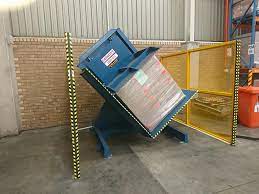
Uncovering the True Impact on Your Operations
When I started my career as an engineer on the factory floor, I saw firsthand how a single injury could impact an entire team. The focus was always on "getting the job done," but sometimes that meant taking risks. As a factory owner now, I know that safety is not a cost; it's an investment in productivity and people. A pallet inverter is one of the clearest examples of a machine that improves both safety and efficiency simultaneously.
Eliminating Ergonomic Risks
The most common workplace injuries in manufacturing and logistics are strains and sprains, particularly to the back, shoulders, and knees. These are caused by repetitive lifting, bending, and twisting. Manually transferring a heavy load from one pallet to another is a textbook example of a high-risk ergonomic task. A pallet inverter removes this entire risk from the equation. The machine does all the heavy lifting and turning. This not only protects your current employees but also makes the job accessible to a wider range of workers, reducing your dependency on operators who can handle heavy physical labor. This is a crucial benefit, especially with an aging workforce.
Creating a More Organized and Efficient Workflow
Manual processes are often inconsistent. The time it takes to swap a pallet can vary depending on who is doing it, how heavy the load is, and how tired the workers are. This unpredictability creates chaos in your production schedule. An automated process is different. A pallet inverter has a fixed cycle time, usually under a minute. This allows you to plan your workflow with much greater precision. You can integrate the pallet exchange step seamlessly into your production or shipping line, just like any other automated process.
Let's compare the two workflows:
| Step | Manual Workflow | Automated Workflow with Inverter |
|---|---|---|
| 1. Preparation | Find 2-4 workers. Clear a large area. | Forklift brings pallet to the inverter. |
| 2. Transfer | Workers manually unstack goods. | Operator presses a button. Machine clamps and rotates load. |
| 3. Pallet Swap | Remove old pallet. Place new pallet. | Forklift removes old pallet, places new one. |
| 4. Re-stacking | Workers manually re-stack goods. | Machine rotates back. Operator unclamps the load. |
| 5. Completion | Secure the load. Move it. Clean up. | Forklift removes the finished pallet. |
| Total Time | 15-30 minutes | < 1 minute |
This new efficiency has a ripple effect. It reduces forklift traffic, frees up floor space, and ensures that the shipping department is never waiting for a load to be prepared. This is how you start to achieve that goal of 95% equipment uptime.
How Can Pallet Inverters Integrate with Digital Factory Systems?
You are pushing for a digital transformation in your steel mill. You've invested in MES platforms and are looking at IoT sensors to get a complete, real-time picture of your operations. However, you've noticed that some "islands" of your factory remain offline. Manual processes, like pallet handling, are black holes in your data stream, making it impossible to achieve true production visualization and optimization.
Modern pallet inverters are designed for integration. They are no longer simple hydraulic machines. They come equipped with PLCs and sensors that can connect directly to your Manufacturing Execution System (MES) or Warehouse Management System (WMS). This allows the inverter to become a smart data point in your factory, tracking cycle times, pallet counts, and operational status, feeding crucial information into your big data analytics platform for a fully transparent production line.
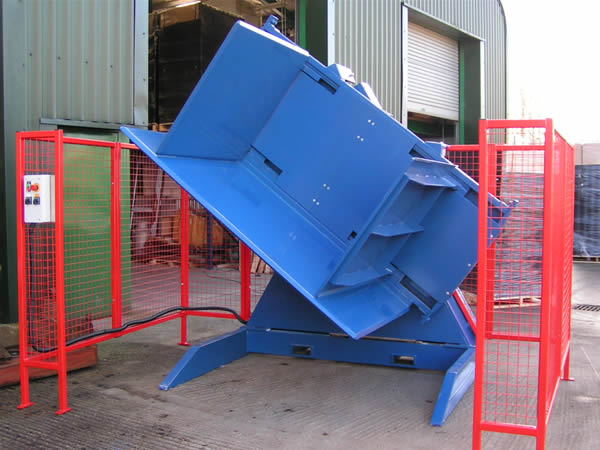
Bridging the Gap Between Mechanical and Digital
I remember when "automation" just meant a machine did a repetitive physical task. Today, that's not enough. True automation, the kind that drives a business like yours forward, means the machine also participates in the factory's information ecosystem. It must both perform its function and communicate what it's doing. This is a core part of our philosophy at SHJLPACK. We don't just build machines; we build intelligent nodes for your production network.
Connecting to Your MES/WMS
A smart pallet inverter can be programmed to communicate with your central factory software. For example, when a forklift driver scans a barcode on a load, the WMS can automatically send instructions to the pallet inverter, telling it which clamping pressure and rotation angle to use for that specific product. Once the cycle is complete, the inverter sends a confirmation signal back to the MES, updating the product's status from "in-house pallet" to "ready-for-shipment." This eliminates manual data entry, reduces errors, and provides real-time visibility into your outbound logistics process.
The Role of IoT Sensors
Integrating IoT sensors into a pallet inverter transforms it from a reactive to a proactive machine.
- Pressure Sensors: Ensure the correct clamping force is applied, preventing product damage without risking a dropped load.
- Vibration Sensors: Monitor the health of motors and hydraulic systems, enabling predictive maintenance. You can get an alert that a bearing is beginning to fail long before it causes a breakdown, allowing you to schedule repairs during planned downtime.
- Cycle Counters: Track the exact number of operations, providing valuable data for performance analysis and maintenance scheduling.
This data is the lifeblood of a modern factory. It allows you to move from fixing broken machines to preventing them from breaking in the first place.
| Data Point from Inverter | How It's Used in Digital Factory | Business Goal Supported |
|---|---|---|
| Cycle Time | Feeds into MES for calculating throughput and OEE (Overall Equipment Effectiveness). | Increase产能利用率 (Increase Capacity Utilization) |
| Pallet Count | Updates WMS inventory status automatically. | Improve产销平衡 (Improve Production-Sales Balance) |
| Fault Codes | Triggers automated alerts to maintenance teams via the MES. | 提高设备有效运行时间 (Increase Uptime) |
| Motor Amperage | Analyzed by big data platform to predict motor failure. | 降低运营成本 (Reduce Operating Costs) |
| Hydraulic Pressure | Monitored to ensure product quality and safety during handling. | 保证质量 (Ensure Quality) |
By integrating a pallet inverter into your digital strategy, you are not just automating a task; you are closing a critical gap in your data landscape, moving one step closer to a fully visualized and optimized operation.
What is the Real Long-Term ROI of a Pallet Inverter?
You are a strategic thinker. You don't just look at the purchase price of a piece of equipment. You conduct a rigorous analysis of its long-term value, considering everything from maintenance costs to its impact on your overall business goals. You need to be convinced that an investment today will continue to pay dividends for the next 10-15 years, helping you navigate market volatility and increasing environmental pressures.
The real long-term ROI of a pallet inverter extends far beyond immediate labor and damage savings. It is a strategic investment in operational resilience, regulatory compliance, and brand reputation. It future-proofs your logistics against rising labor costs and stricter manual handling regulations. Furthermore, it enhances your image as a modern, efficient, and safe supplier, which can be a deciding factor for your customers in the competitive automotive and construction industries.
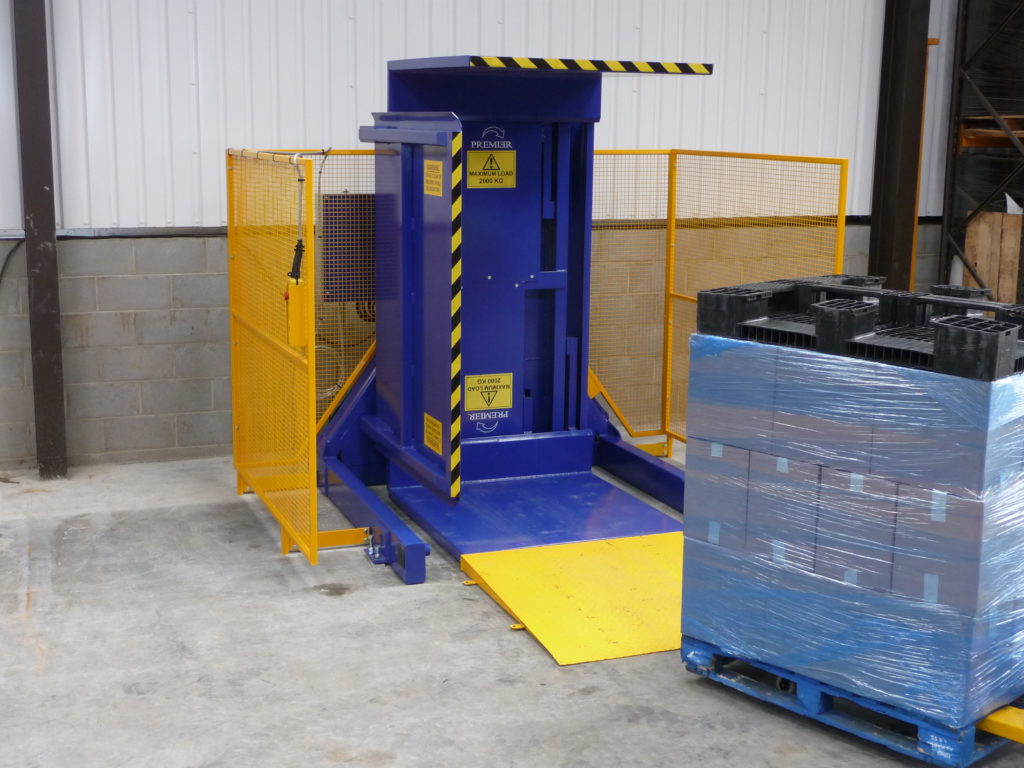
Calculating the Total Value of Your Investment
Throughout my journey from engineer to factory owner, I learned one crucial lesson: the best investments are the ones that solve multiple problems at once. A pallet inverter is a perfect example. It's a simple concept, but its impact is felt across the entire organization. When you calculate its true ROI, you must look at both the "hard" quantitative savings and the "soft" qualitative benefits.
Future-Proofing Your Operations
Labor costs will continue to rise. Workplace safety regulations, especially concerning ergonomics and manual handling, will only become stricter. A facility that relies on manual labor for key processes is vulnerable to these changes. By automating pallet exchange, you build a more resilient operation. You are less affected by labor shortages or new regulations. This stability is incredibly valuable in a cyclical industry like steel. It ensures that your packaging and shipping department can always keep up with your production output, no matter the external pressures.
Enhancing Your Brand and Customer Relationships
Your customers, particularly in sophisticated sectors like automotive manufacturing, are increasingly auditing their suppliers' processes. They want to see modern, clean, and safe facilities. A highly manual, chaotic shipping area can be a red flag. Conversely, a streamlined, automated process using modern equipment like a pallet inverter sends a powerful message. It says you are a professional, reliable partner who invests in quality and efficiency. This can strengthen your existing relationships and help you win new business. It also contributes to environmental goals by reducing waste from damaged products.
Total Cost of Ownership (TCO) Analysis
A forward-thinking leader like you understands TCO. It's not about the cheapest machine; it's about the best long-term value. Let’s create a simplified TCO comparison over a 5-year period.
| TCO Component (5-Year Estimate) | Manual Handling Process | Pallet Inverter Process |
|---|---|---|
| Initial Investment | $0 | -$50,000 |
| Labor Costs | -$225,000 | -$25,000 |
| Product Damage Costs | -$75,000 | -$2,500 |
| Maintenance | $0 (Forklift wear, etc.) | -$5,000 |
| Workplace Injury Risk | High (Potential -$50k+ cost) | Low |
| Total 5-Year Cost | -$300,000+ | -$82,500 |
| Net Value (ROI) | Baseline | > $217,500 |
As you can see, when you look at the complete picture, the decision becomes clear. The initial cost of the pallet inverter is quickly offset by massive savings in labor and product protection. The long-term value comes from creating a more robust, efficient, and reputable operation that is prepared for the challenges of the future.
Conclusion
In short, Brazilian manufacturers choose pallet inverters for a clear, compelling reason: they provide a total solution for cost, safety, and efficiency, directly supporting modern operational goals.



